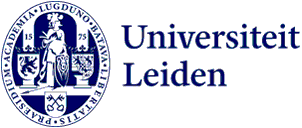
Archaeologist Jennifer Swerida investigates emergent social complexity in the Omani desert
In June 2024 the Faculty of Archaeology welcomed a new Assistant Professor. Dr Jennifer Swerida, originally from the United States, will strengthen the Faculty’s expertise on the archaeology of West Asia. ‘I explore human-environment relationships inside an ancient oasis and the surrounding land. Previous research has been very much focused on the limiting factors of water access, but this doesn’t necessarily give credit to human creativity.’

Focus on Syria
Jennifer Swerida decided to become an archaeologist at the age of six, and she stuck to it. ‘I was one of those weird children,’ she laughs. ‘So I did my Archaeology education at Boston University, the only major university in the US that offers an Archaeology degree that is not nestled either within anthropology or a regional study area.’ She followed up on her BA with a Master’s in Near Eastern Languages and Civilizations at the University of Pennsylvania, and then with a PhD at the Johns Hopkins University under Glen Schwartz. ‘I was about to go work with him on his project at Tell Umm el-Marra in Syria when the Syrian civil war started. That led me to explore the region more broadly, as before I had been very much focused on Syria.’
Alternative paths to societal complexity
Early in her PhD Swerida explored social theory about alternative paths to societal complexity. ‘Traditionally speaking urbanisation was the way to go. But there are other interesting ways that people were organising themselves and interacting with state level societies as peers.’ She then was invited to a project in Oman, then led by Greg Possehl, and here it all came together. ‘It ticked all of the intellectual boxes for me. In the Early Bronze Age you have many indicators of emergent social complexity, but no writing, and no city building. Even while these people were part of a big international economic network that stretched from the Indus to the Mediterranean.’ Years later, Swerida now directs the Bat Archaeological Project in Oman.

Human-environment relationships
And now Swerida has landed in Leiden. ‘As Assistant Professor in the Archaeology of West Asia, I shall continue my work in Oman at the Early Bronze Age site of Bat, a UNESCO World Heritage site. Here I explore the cultural side of human-environment relationships inside an ancient oasis and the surrounding land. Previous research has been very much focused on the limiting factors of water access, but this doesn’t necessarily give credit to human creativity.’ While true that people tend to live in close proximity to water sources, it does not stop them being active in other parts of the landscape. ‘These people knew where to find water, I’m more interested in the other ways they interacted with their challenging surroundings to make a home.’
Environmental records
The plan behind the project is to build an environmental record of the region alongside the archaeological record. ‘Our knowledge of the local chronology is not great, and there seems to be a temptation to tip into environmental determinism.’ Focusing only on the archaeological record may create an oversimplified or leveled narrative of the environmental impact. ‘I am trying to add some nuance to that. A more refined environmental record of what was going on in the Early Bronze Age and how it relates to human activities will help.’

Oasis settlements
So what do we know about the Early Bronze Age in this area of Oman? ‘In other parts of the Middle East we see complex urban societies, but we do not see this in a site like Bat. What we do see is a shift to the beginning of oasis settlements, and the practice of farming grain under the canopy of date palms. There is a conversation to be held about this landscape being created by people.’ Date palms get their water from water sources deep underground. ‘These date palms create a shady, more humid and more livable environment in the very hot Arabian landscape. In this first phase it looks like people are still highly mobile, but they have these nodes in the landscape where you can grow crops and maybe bring your herds. Then you hit around 2700 BCE and you start to see a dramatic increase in social complexity.’
Home-grown complexity
Permanent dwellings, more evidence for agriculture and larger scale buildings appear mostly in the oases. ‘We see these large, circular, monumental structures, often with a well in the middle that are probably related to resource management. Another innovation is formed by large tombs with dozens or hundreds of people being buried together, implying close probably kin-based social organisation.’ At the same time, much larger and more diverse economic interaction with overseas partners becomes visible. ‘This society offers a different type of complexity that’s not just imported from Mesopotamia or Southern Iran. They created their own, unique way of living in their landscape and being members of an international community.’

Conversations with the people of Bat
Swerida’s project would not be complete without involving the contemporary people living around the site of Bat. ‘Archaeological projects in the past could generally be summed up as the white Western archaeologists coming in and telling the locals what their heritage is about. We try not to do that. Instead we’ve started a conversation with the people of Bat, asking them what they would like us to study. Or what they think are the most important parts of the landscape to protect or investigate. We attempt to bring the local community back into the narrative and use that to drive the direction of research being done at the site.’ Secondly, Swerida is working with the Oman Ministry of Heritage and Tourism to develop the site for visitors, a long-lasting wish by the local community. ‘The site is currently not fenced-in and there are no signposts. But most importantly, the local population should be benefited by the fact that they live around a UNESCO site.’
